Table of Contents
Ever found yourself mid-recipe, only to discover that the crucial dollop of sour cream is missing? It's a kitchen crisis we've all faced, leaving us wondering, "is there a substitute for sour cream?". Fear not, fellow food adventurers! This guide is your culinary compass, navigating the world of sour cream alternatives. We'll explore a variety of options, from tangy dairy stand-ins to creamy vegan wonders, ensuring that your dips, baked goods, and tacos never suffer from a sour cream shortage. Get ready to uncover the secrets of each substitute, learn how to use them correctly, and even try your hand at making your own. Whether you're out of sour cream, looking for a healthier option, or simply want to experiment, this article has you covered. Let's get started and discover how many ways you can still get that perfect creamy tang!
Why You Might Need a Sour Cream Substitute
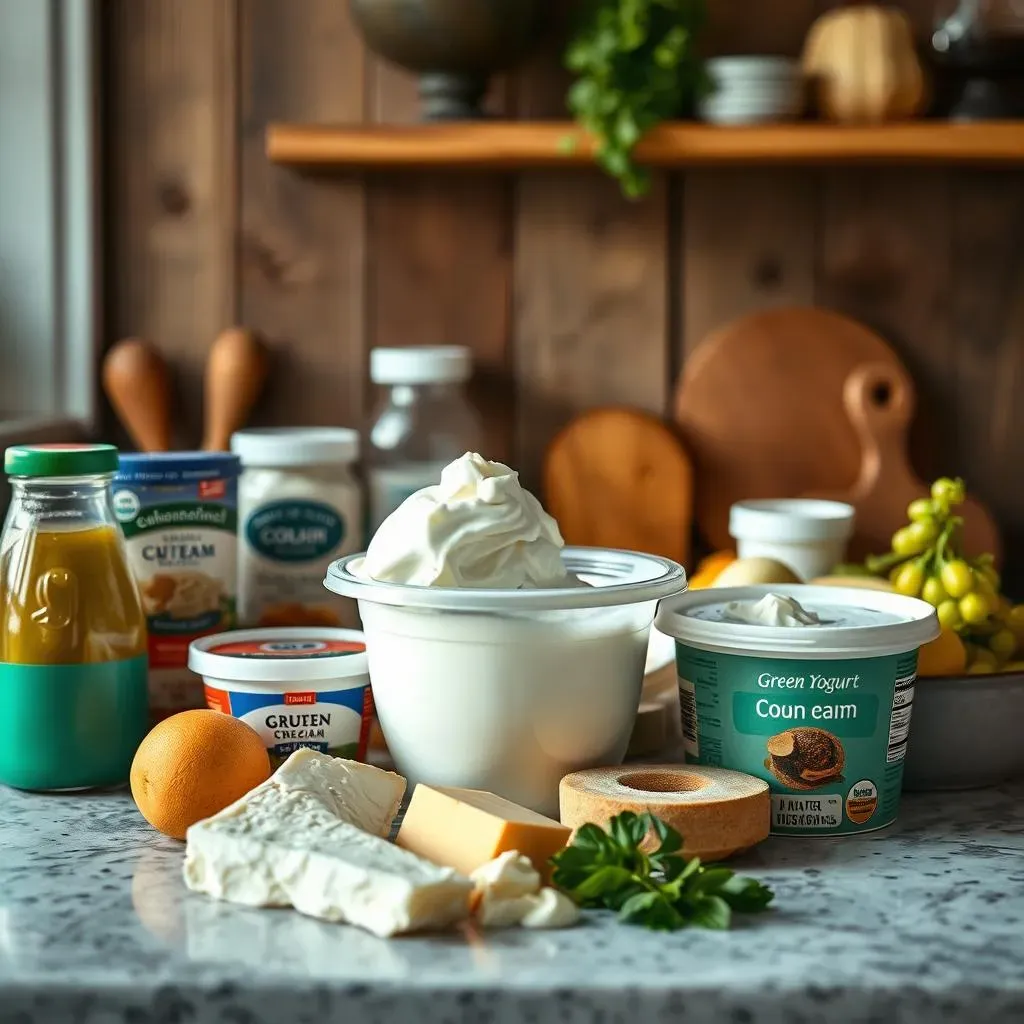
Why You Might Need a Sour Cream Substitute
Let's face it, sometimes life throws you a curveball, and that curveball is often an empty container where your sour cream should be. Maybe you're halfway through making your famous tacos and BAM! No sour cream. Or perhaps you're trying to bake a cake, and the recipe calls for it, but your fridge is bare. It happens, right? But there are other reasons, too. Maybe you're trying to eat less fat or dairy, or you're cooking for someone with dietary restrictions. There are even times when you just don't like the taste of sour cream, and that's totally okay! Whatever the reason, knowing a few good substitutes can be a real kitchen lifesaver. It's about being flexible and not letting one missing ingredient stop you from creating delicious food.
Top Dairy Alternatives When You're Out of Sour Cream
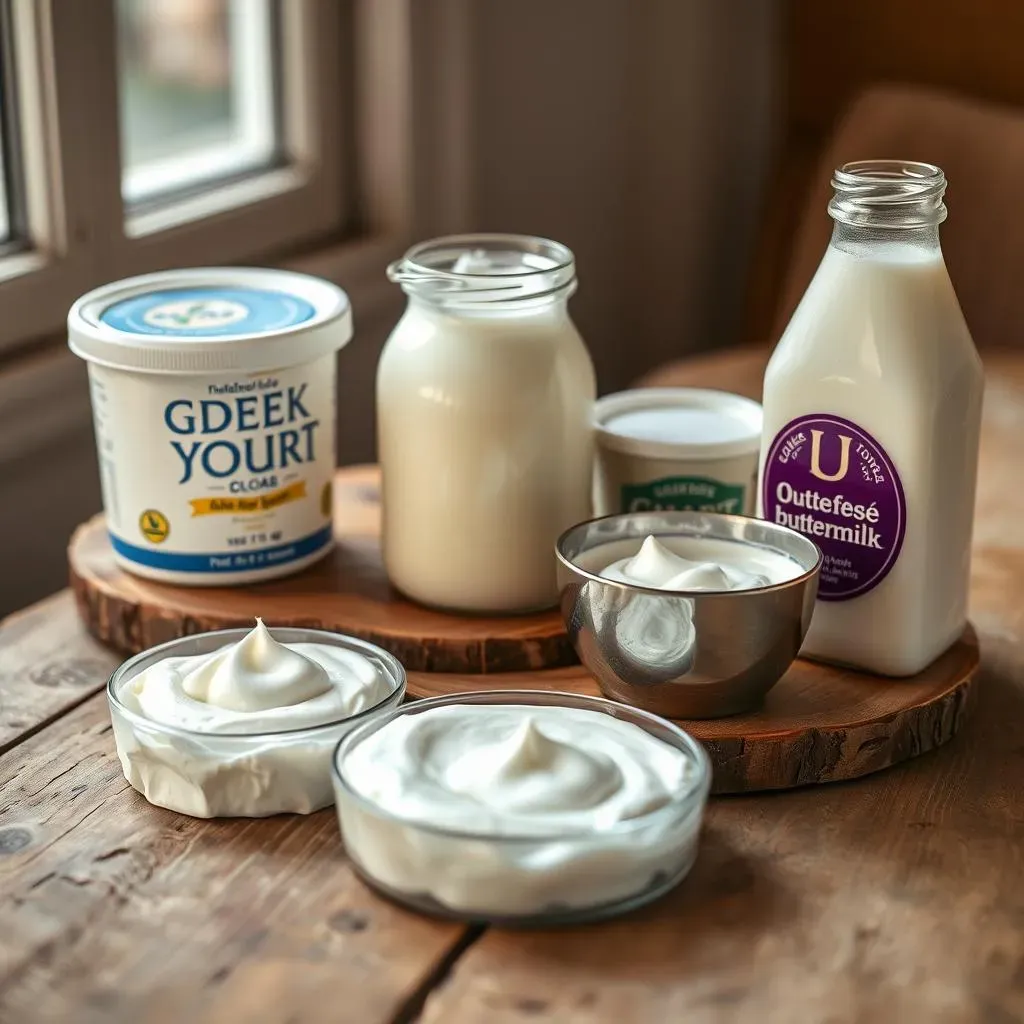
Top Dairy Alternatives When You're Out of Sour Cream
Okay, so you're staring into that sad, empty fridge, and the sour cream is gone. But don't worry, the dairy aisle is packed with awesome substitutes! First up, let's talk about Greek yogurt. This stuff is a total superstar. It's got that same creamy, tangy vibe as sour cream, and you can usually swap it in a one-to-one ratio. Seriously, it’s that easy. I've used it in everything from dips to dolloping on chili, and nobody ever knows the difference. Then there's cream cheese. Now, it’s definitely thicker than sour cream, so you'll need to loosen it up a bit. Just a splash of milk or water will do the trick, and you've got a rich, creamy alternative. It’s fantastic in baked goods and makes a killer frosting.
Another great option is crème fraîche. It's a bit richer and tangier than sour cream, but that extra flavor can really elevate your dishes. Think of it as sour cream's fancier cousin. You might want to use a little less of it initially to see how it tastes in your recipe. And don't forget about buttermilk! It's thinner, so it might not work as a direct swap for something like a thick dip, but it's excellent in baking or as a base for creamy sauces. It adds a lovely tang and a light texture. These dairy options aren't just good substitutes; they're sometimes even better, adding their own unique touches to your meals.
Dairy Substitute | Texture | Best Uses |
|---|---|---|
Greek Yogurt | Thick, creamy | Dips, toppings, baking |
Cream Cheese | Thick, dense | Frosting, baking, sauces |
Crème Fraîche | Rich, thick | Toppings, sauces |
Buttermilk | Thin, liquid | Baking, sauces |
NonDairy Options: Sour Cream Substitutes for Everyone
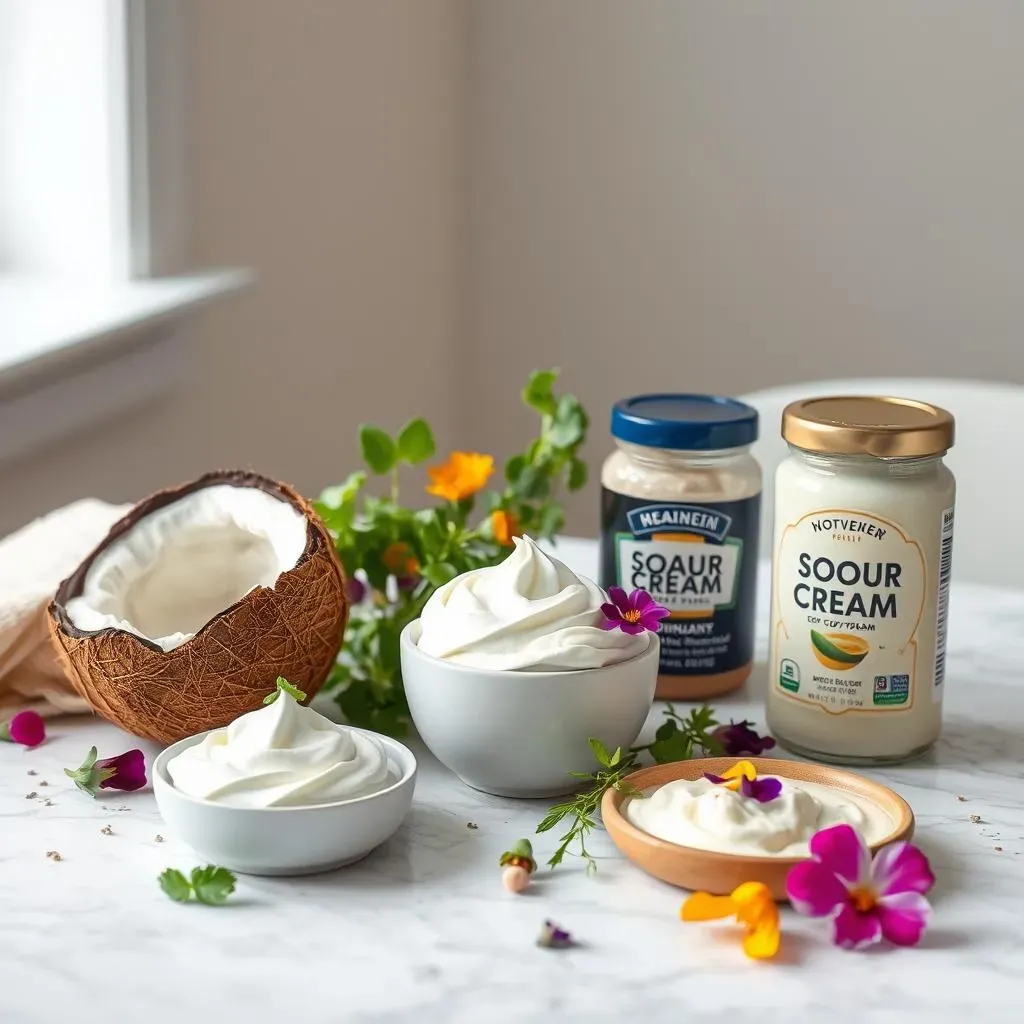
NonDairy Options: Sour Cream Substitutes for Everyone
Alright, let's talk about the non-dairy side of things, because everyone deserves creamy goodness, no matter their dietary choices! Coconut milk is a game-changer. I’m not talking about the watery stuff in the can; you want the full-fat kind. Chill it in the fridge, then scoop out the thick cream on top, and you’ve got a luscious, dairy-free substitute with a hint of coconut flavor that works great in both sweet and savory dishes. And if you're feeling a little more adventurous, cashews are your secret weapon! Soak them in hot water for a bit, then blend them until smooth with some lemon juice and a touch of water. You will be amazed how much it tastes like sour cream.
There are also plenty of store-bought vegan sour creams now, made from soy, oats, or other plant-based ingredients. These are super convenient and can be a real lifesaver when you need a quick substitute. I’ve tried a few, and honestly, some are so close to the real deal that I wouldn't know the difference. Each one has its own unique flavor and texture, so it’s worth trying a few to see which one you like best. The best part is you can use these as a 1:1 substitute, just like you would with normal sour cream.
Non-Dairy Substitute | Base Ingredient | Flavor Notes | Best Uses |
|---|---|---|---|
Coconut Cream | Coconut Milk | Slightly sweet, coconutty | Dips, toppings, desserts |
Cashew Cream | Cashews | Tangy, neutral | Sauces, dips, baking |
Vegan Sour Cream | Various (soy, oat, etc.) | Varies, often tangy | Anywhere you'd use sour cream |
How to Use Each Sour Cream Substitute Correctly
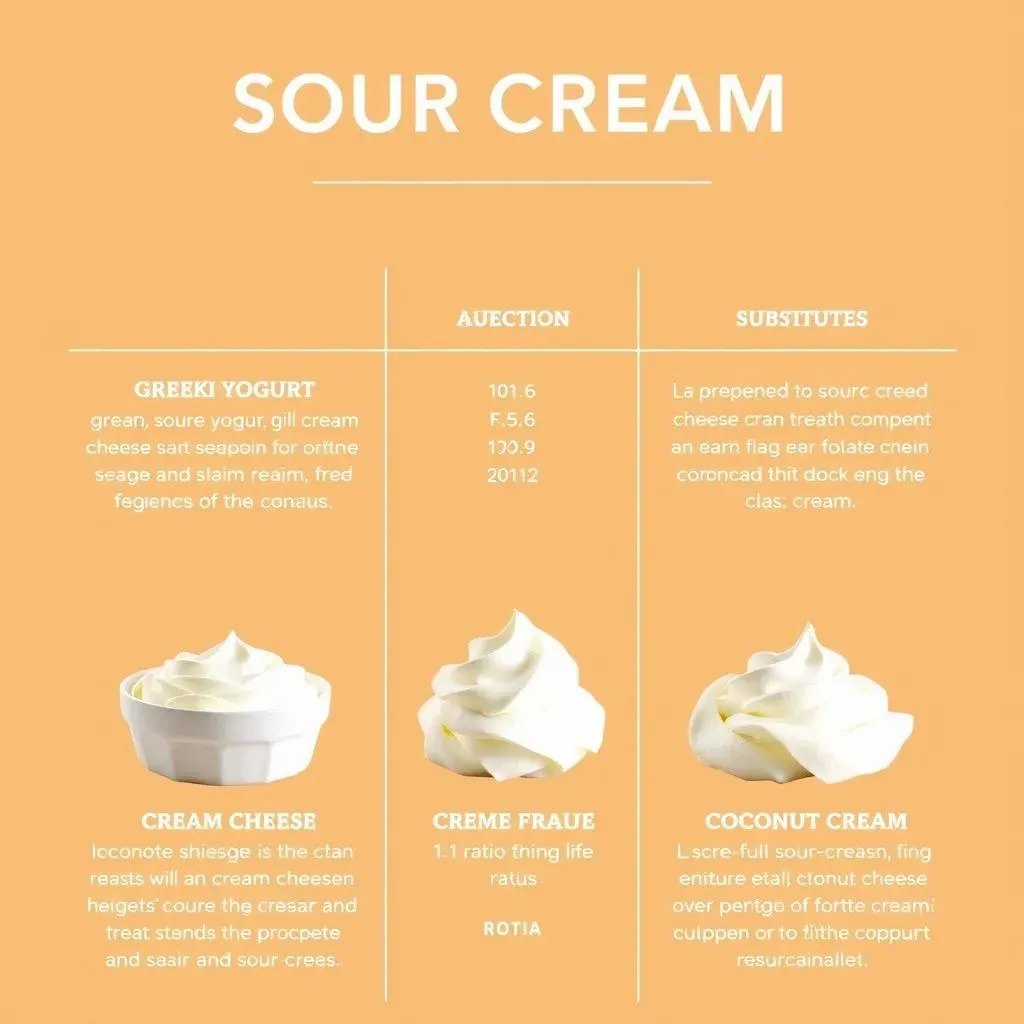
How to Use Each Sour Cream Substitute Correctly
Greek Yogurt: The All-Around Champ
Alright, let's talk specifics. Greek yogurt, as I mentioned, is a pretty straightforward swap. You can usually use it in equal amounts to sour cream without any major issues. Think about it like this: if your recipe calls for one cup of sour cream, use one cup of Greek yogurt. It's that simple. Now, if you're using it in something like a cold dip, you're golden. But for baking, full-fat Greek yogurt works best. The reduced-fat versions can sometimes make your batter a bit too watery. I always go for the full-fat option myself; it just gives a better texture and flavor to the final product. And if you find the tang is a bit too strong, a tiny pinch of sugar or a touch of honey can mellow it out.
When it comes to using Greek yogurt as a topping, it's fantastic as is, but you can also add a bit of lemon zest or some fresh herbs to make it even better. I love mixing it with chopped dill and a squeeze of lemon to put on top of baked potatoes. It's so good!
Cream Cheese and Crème Fraîche: The Rich and Tangy Duo
Cream cheese and crème fraîche are your go-to when you need a richer, more decadent flavor. Cream cheese, as we know, is thick. So you can't just scoop it into your recipe. You will want to soften it first. Let it sit at room temperature for a bit, or microwave it for a few seconds. Then, add a tablespoon of milk or water at a time until it reaches the consistency of sour cream. Be careful not to add too much, or it will become too runny. I always like to start with a small amount and then add more as needed.
Crème fraîche, on the other hand, is already a bit thinner than cream cheese. You can swap it in a 1:1 ratio for sour cream, but remember it does have a stronger, richer flavor. So, start with a bit less and taste as you go. It’s great for sauces, soups, and anything that needs a touch of luxury. I find that when I add it to my scrambled eggs, they become next-level delicious.
Substitute | How to Prep | Ratio | Best For |
|---|---|---|---|
Greek Yogurt | None | 1:1 | Dips, toppings, baking |
Cream Cheese | Soften, add liquid | Adjust to consistency | Frostings, baking |
Crème Fraîche | None | Start with less, adjust to taste | Sauces, soups |
Coconut Cream and Cashew Cream: The Vegan Wonders
For the non-dairy substitutes, there are a few things to keep in mind. Coconut cream, as mentioned, needs to be the full-fat kind, and you want to use the thick part from the top of the can. The watery part can be used in smoothies or other recipes. When using it as a sour cream alternative, use it in a 1:1 ratio. If you are using it in a dish that requires a bit of acidity, add a splash of lemon juice or apple cider vinegar to mimic the sourness of sour cream. I especially love it in my curries; it adds a great richness and creaminess.
Cashew cream, on the other hand, needs a bit more prep. You have to soak the cashews for at least a few hours or even overnight. Then, blend them with lemon juice and water until smooth. I like to add a bit of apple cider vinegar to give it that extra tang. You can use it as a 1:1 substitute in most recipes, but you may need to adjust the liquid a bit depending on the consistency you're after. It’s great in dips, sauces, and even as a topping. I would say this is probably the most versatile of the vegan options.
Making Your Own Sour Cream Substitute at Home
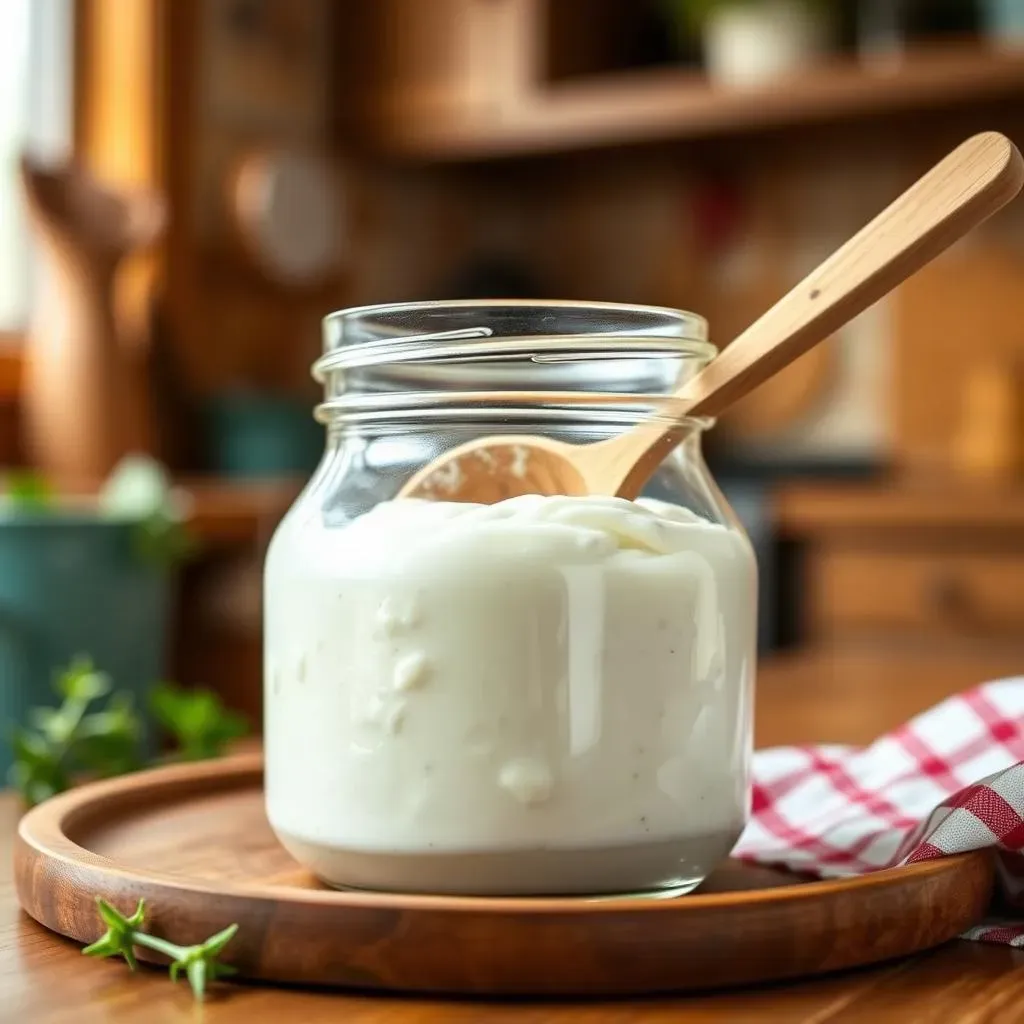
Making Your Own Sour Cream Substitute at Home
The Quick & Easy Method: Lemon & Cream
Okay, so you're feeling ambitious and want to make your own sour cream substitute from scratch? I get it! It’s actually easier than you might think. If you've got some heavy cream and either lemon juice or white vinegar, you’re already halfway there. The basic idea is to add an acid to the cream, which will thicken it and give it that signature sour tang. It's like a mini science experiment in your kitchen. I always feel like a mad scientist when I do this, mixing and watching the magic happen. Simply mix one cup of heavy cream with one tablespoon of lemon juice or white vinegar. Stir it well, and then let it sit at room temperature for about 20-30 minutes. You'll notice it starts to thicken up, and that’s how you know you’re on the right track.
After it has thickened, give it a good stir. If it's not quite thick enough for you, let it sit for another 10-15 minutes. This method works pretty well, and it’s a great option when you don't have time to run to the store or if you like to control exactly what goes into your food. It's also a fun way to impress your friends with your culinary skills, I tell you what!
The Patient Approach: Cultured Cream
Now, if you’re feeling a bit more patient and want a more authentic sour cream flavor, you can try the cultured method. This involves a bit more time, but it's worth the wait. You'll need heavy cream and a bit of buttermilk or a sour cream starter culture. Mix one cup of heavy cream with two tablespoons of buttermilk (the kind with live cultures) or follow the instructions on your starter culture packet. Pour the mixture into a clean jar, cover it loosely, and let it sit at room temperature for 12-24 hours, or until it thickens and has a tangy aroma. The timing can vary depending on the temperature of your kitchen, so keep an eye on it.
Once it’s thickened, give it a good stir and refrigerate it for at least a few hours to chill and set completely. This method gives a more complex, authentic sour cream flavor because of the live cultures. It’s my go-to method when I have the time because it really does taste like the real deal. Plus, it’s kind of cool to think you’re making a living culture in your kitchen. It is like having a tiny pet, which you can then eat!
Method | Ingredients | Time | Flavor |
|---|---|---|---|
Quick & Easy | Heavy cream, lemon juice/vinegar | 20-30 minutes | Tangy, slightly less complex |
Cultured Cream | Heavy cream, buttermilk/starter culture | 12-24 hours + chilling | Authentic, complex, tangy |
Tips for Homemade Success
No matter which method you choose, there are a few tips that can help you create the best homemade sour cream substitute. First, make sure your ingredients are fresh. Using old cream or buttermilk can affect the flavor and texture of the final product. Also, always use clean utensils and jars to prevent any unwanted bacteria from growing. It's always better to be safe than sorry, right? If you're using the cultured method, be sure to keep an eye on the mixture and check it regularly. The thickening time can vary depending on the temperature of your kitchen. You want to catch it when it's just right, not too thick and not too thin.
Once your substitute is ready, store it in an airtight container in the refrigerator. It should last for about a week, but make sure to check it before using it. If it smells off or has mold, it’s better to toss it out. I always like to make a fresh batch every few days to be on the safe side. Making your own sour cream substitute is a fun and rewarding experience. It allows you to control what goes into your food and gives you a great sense of accomplishment. Plus, it means you'll never be caught without sour cream again!
Tips for Choosing the Right Substitute for Sour Cream

Tips for Choosing the Right Substitute for Sour Cream
Consider the Flavor Profile
Okay, so you've got all these awesome substitutes, but how do you know which one to pick? Well, first, think about the flavor you’re trying to achieve. If you're making something like a Mexican dish where that tangy, bright note of sour cream is key, Greek yogurt is your best bet. It has a similar tartness that will cut through the richness of the other flavors. If you are looking for a more decadent and rich flavor, then you want to go with cream cheese or crème fraîche. They are both amazing in baked goods because they add an extra level of richness. But, if you're making a dessert, the slightly sweet notes of coconut cream might be what you are after. So, think about what taste you're trying to get and pick the substitute that matches it best. It's like choosing the right paint color for your room; it needs to vibe with the overall feel.
Also, don't be afraid to experiment a little! Sometimes, the best discoveries come from mixing things up. Maybe you want to try using a mix of Greek yogurt and a little bit of crème fraîche to get a balance of tang and richness. Or perhaps you'll use cashew cream in a dip and then add some lemon zest to make it even brighter. The kitchen is your playground, so have some fun with it! I once accidentally mixed a bit of coconut cream into my mashed potatoes, and it was surprisingly delicious. You never know what you'll create if you're willing to take a little risk.
Match the Texture to the Recipe
Next up, let's talk texture. The texture of your sour cream substitute is almost as important as the flavor. If you're making a thick dip, like a ranch or a French onion dip, you'll want a substitute that's nice and thick, like Greek yogurt or a softened cream cheese. But, if you're making a sauce or a soup, where you need a bit of liquid, buttermilk or even a thinned-out cream cheese might be a better fit. Think about the role the sour cream plays in your recipe. Is it there to add moisture, thickness, or both? Then, choose your substitute accordingly. It’s all about making sure the texture is just right so that the final dish turns out exactly how you want it. I’ve learned that the hard way by adding buttermilk to a dip, which ended up being way too runny.
And remember, you can always adjust the texture of your substitute by adding a bit of liquid or a thickening agent. If your Greek yogurt is a bit too thick for your liking, a splash of milk or water will do the trick. And if your buttermilk is too thin for your recipe, you can mix in a bit of cornstarch. It's all about being flexible and adapting to what you have on hand. And don't forget to taste as you go! The best way to make sure your substitute is spot on is to test it out and adjust until you get the perfect flavor and texture. I always try a little of my substitute before adding it to my recipe, just to make sure it's exactly what I want.
Recipe Type | Ideal Texture | Recommended Substitutes |
|---|---|---|
Dips | Thick, creamy | Greek yogurt, cream cheese, cashew cream |
Sauces | Smooth, slightly liquid | Buttermilk, crème fraîche, thinned cream cheese |
Baked Goods | Moist, rich | Cream cheese, full-fat Greek yogurt, coconut cream |
Toppings | Versatile | Greek yogurt, crème fraîche, vegan sour cream |